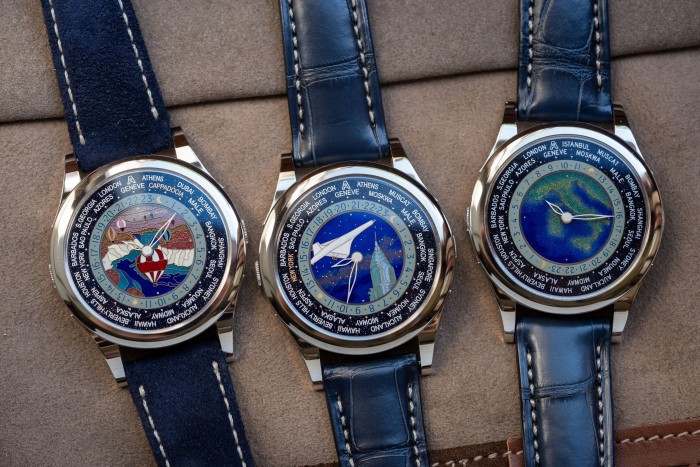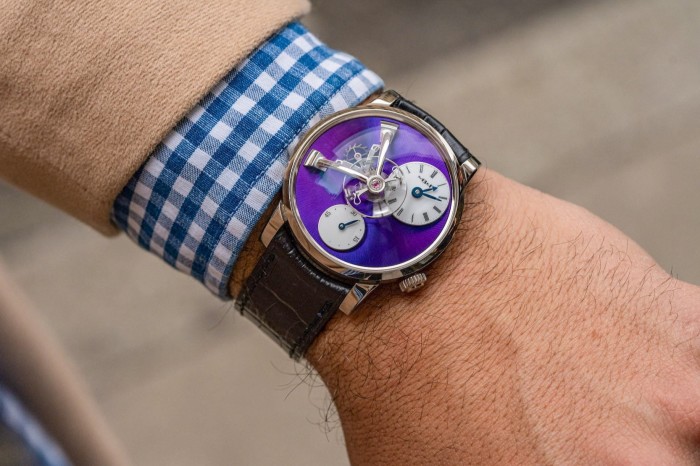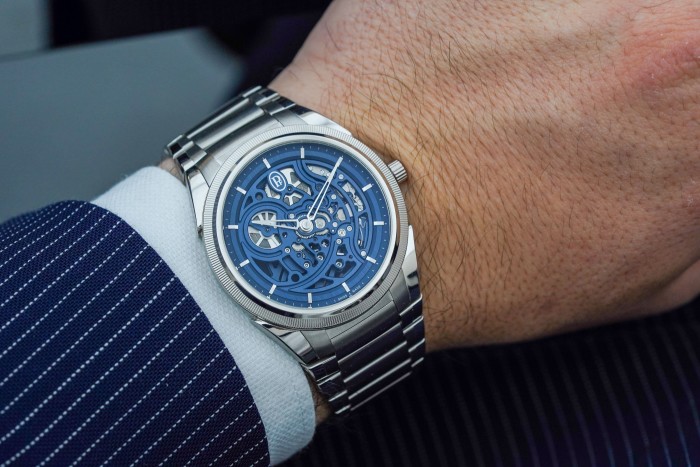
Watch aficionados can add another date to their diary: Milano Watch Week, the inaugural edition of a fair dedicated to independent watchmakers, will take place on October 4-6 across the top two floors of the Terrazza Martini, a trendy location near the Duomo cathedral in the centre of Milan.
However, instead of showcasing mainstream brands, the Milanese fair will focus on 20 niche watchmakers, including MB&F, Ressence, Parmigiani Fleurier, De Bethune and Andersen Genève — not household names, but those with an established reputation among collectors.
“Modern watch collecting, as we know it, began in Italy, with Milan serving as one of the key hubs,” notes Fabrizio Bonvicino, who is organising the event together with Vittorino Loreto, Edoardo Armentano and Stefano Mantovani. “So we wondered why there is no international event in the very place that helped spark the revival of watchmaking.” Bonvicino, who also runs the Italian Watch Spotter website with Loreto, points out that Italy was among the first countries to believe in mechanical watches and “champion their renaissance”.
Unlike the primarily trade-focused Watches and Wonders show, which is held annually in Geneva in spring, the new Milano Watch Week models itself on the more public-facing Dubai Watch Week and Geneva Watch Days events — targeting consumers and collectors. The participating brands range from “long-established names to newly launched ones”, says Bonvicino. But all are distributed by two of the main sponsors of the fair: the historical Italian watch retailers Pisa and Great Masters of Time (GMT).
Chiara Pisa, Pisa’s chief executive, says her company’s commitment to supporting niche brands stems from their “impactful creativity”, which she believes is more prevalent at independent watchmakers than elsewhere.
“Since its founding, Pisa has recognised the immense potential of niche brands as embodying the unique values that define the strength of the watchmaking industry,” she says. “My grandfather, Ugo, was one of the first to showcase what were then little-known brands, which have since become cornerstones of horology. This commitment to supporting niche brands continues today and will be further reinforced with a dedicated space within our new flagship store.”

With the equivalent of SFr1bn ($1.18bn) worth of watches imported in 2023, Italy ranks among the top 10 countries globally for purchases of Swiss timepieces. It is fourth in Europe, behind the UK, Germany and France.
However, according to Bonvicino, Italy’s significance extends beyond these numbers. He recalls how Giorgio Corvo, now owner of the retailer GMT, played a pivotal role in convincing Jaeger-LeCoultre to resume production of the iconic rectangular-shaped Reverso model, after he and his team came up with a way to integrate an already existing movement for it in the early 1970s. The Reverso, revived after a gap of 27 years, is now one of the most recognisable watches in the world.
Oliver Müller, founder of the Swiss consultancy LuxeConsult, says consumer-focused regional events, where brands get to meet their end clients, are gaining traction. He also believes that independent brands represent the next frontier for watch collectors looking for the “next new kid on the block”. A collector’s journey often begins with institutional brands “like Patek Philippe, Rolex, or Audemars Piguet and then evolves into an appreciation for vintage pieces from these same brands or lesser-known or defunct watchmakers”.


Müller finds that, “as their passion deepens, many collectors start exploring new artisan watchmakers or niche brands that, while lacking a long-standing legacy, offer intriguing DNA rooted in craftsmanship or mechanical innovation”.
Independent watchmakers certainly enjoy a moment in the spotlight. They have established a strong presence at the industry’s most important fairs, and watch enthusiasts are increasingly eager to support them.
Next month, Andrew McUtchen, the founder of the digital platform Time+Tide, will open a store in London entirely dedicated to niche brands following the success of his first venture in Melbourne, Australia. “Watch fairs and event-based activations, like Milan Watch Week, are aimed squarely at those wishing to learn more, as opposed to those wishing to buy, who already have relationships,” says McUtchen. “The other unique aspect of independent brands is that you’re likely to meet the founder, the designer, or the driving forces behind the brand at an event like this when they show.”
“In recent years, independent watchmakers have thrived, thanks largely to social media,” adds Gherardo Werner, head of marketing and sales at GMT. “These platforms have enabled smaller brands to achieve visibility on par with larger competitors, despite lacking big marketing budgets,” he says.
But Bonvicino and Loreto stress that the Milan fair will not only showcase watches but also serve as a window into Italian craftsmanship, and the art of hospitality. Among the fair’s sponsors are MV Agusta, the renowned motorcycle manufacturer, which will display one of its latest models, and TopLife Concierge, which will assist guests in making the most of their time in Milan.
“There’s craftsmanship in creating both a watch and a motorcycle of that quality, and we wanted to showcase the Italian art of hospitality as well,” says Bonvicino of these non-watch-related sponsors. “The idea isn’t just to come and see the watches, the concept of Milan Watch Week is to experience the watches while enjoying Milan and Italy in all their facets.”